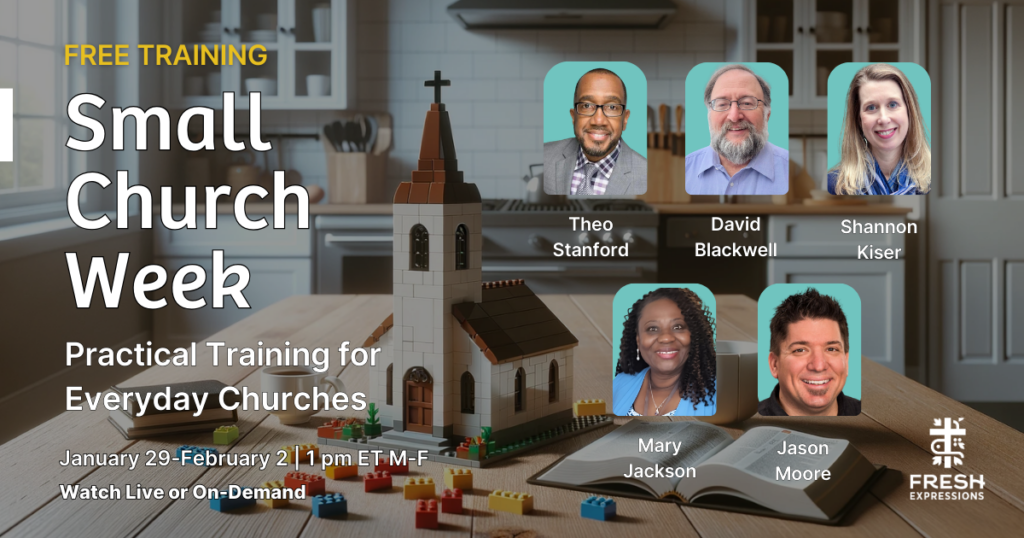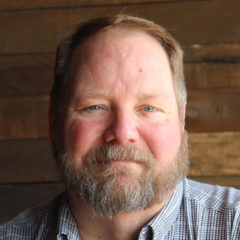Let me tell you a story that should resonate with leaders of small churches. It’s a story about how a small community went on a journey from feeling insignificant to a place of meaning and purpose. It’s about how a faith community moved from feeling lost and even desperate to a place of life, vitality, and determination.
I recently completed a three-and-a-half-year, bi-vocational calling to a small church in a small town. While it was a rich time and I deeply love the saints there, it became clear that I had done what was needed. It was time to go elsewhere and do it again.
Over that time, lessons were learned and progress was made. I feel (and others have said) that I left them in a much better place than they were.

Small Churches and Bi-Vocational Clergy
Small churches in small towns struggle to staff their congregations with clergy. This is an unavoidable reality that mostly centers around finances. I believe that for most congregations in the future, bi-vocational clergy will be the norm; that is, clergy who have another vocation and revenue stream to pay living expenses. This is also nothing new. The church throughout history has had these arrangements, with some clergy being circuit riders serving multiple congregations. The Apostle Paul himself was famously a tentmaker.
Starting Ministry in a Small Church
I started the first Sunday in January 2020, and had about ten weeks of “normal” ministry. Average Sunday Attendance started at about 40-50 people, and after 10 weeks, we hit 70 a few times. The numbers grew as visitors came to check out the new leader.
The first thing I did was pray and call the congregation to pray about our future. We prayed for our mission and how God would use us in new ways to reach people with the good news of Jesus. Personally, I had a moment of clarity around this.
I am a veteran minister, I’ve been to many places, and served in a variety of circumstances. I led a successful church plant. I’ve taught at seminary.
Over the years, I’ve developed a “bag of ministry tricks” that work. Part of me was tempted to reach into my bag and pull out a program, a course, or an event, dust it off, and give it a try. I felt and sensed the Lord saying “no!”
I needed to gain an understanding of what some would call “contextual intelligence” about this small and rural community.
So, in those first few weeks, I prayed, listened, and used all my senses to discern the needs, uniqueness, and context of this small town. I invited folks from the congregation to prayer walk the community with me. As we did, we prayed, asking the Lord to show us who was here, what the needs were, what He was already doing, and how we could join the work in progress. We learned about history, demographics, economics, and political convictions that began informing us of opportunities in front of us.
The Pandemic Cocoon
Then we entered the COVID-19 Pandemic in the middle of March, and everything changed. We shut down for about six weeks. They don’t teach you in seminary how to navigate a pandemic, but we did what we could. Going online was not an option since the best we had in this small town was DSL internet speeds. I directed the congregation to attend churches virtually that I knew. I communicated with the congregation a few times a week by email.
As soon as regulations relaxed, we reopened. We were the first church in our denomination within our state, and we developed strict guidelines. It was hard, but we persevered. There were even some pandemic gifts that came to us. The community became more intentional about caring for one another. They checked in to help with groceries, errands, and looking after those who were most isolated.
The next 12-18 months of pandemic ministry were a gift. My sermons were peppered with ideas to inspire the mission of the church. I encouraged the congregation to be outward-focused, engaging with people where they were and entering the community with missional intent. I used Fresh Expression stories and principles to challenge people to think differently about our identity and purpose as a church.
The church had a mission of filling the pews with people, and now we were focusing on filling people with God.
It was as though the pandemic was a cocoon, and as the pandemic restrictions eased, we emerged with new life, a new form that refocused our mission.
Experimenting With Fresh Expressions
In December 2021, after much preparation, conversations, and buy-in from the flock, we hosted our first Dinner Church. Thirty people from the church worked the event. With COVID still lingering, we set up outside. We had a great meal. Although the Dinner Church format was different, we still honored our liturgical tradition by framing the event around St. Nicholas Day. Another 35 people who had no connection with the Sunday Morning congregation came. There was laughter, joy, conversation, and more as we shared a great meal, told a Jesus Story, offered prayers, and gathered around tables in community fellowship.
Another Fresh Expression emerged around a “Writer’s Guild.” A person in the congregation was an English Professor who was also publishing her first novel. I, myself, was also having my first book come to print. So she gathered other writers or would-be writers to talk about the craft. This led to deeper conversations around purpose, meaning, expressions, and faith. About a dozen or so folks were a part of this Writer’s Guild.
These new Fresh Expressions were becoming a part of the fabric of this church, but the congregation had other needs. The property was in disrepair. The sanctuary had gone 70 years without upgrades. In fact, we had two-slot electrical outlets. The landscape was tired and bare. The parish hall and kitchen were in desperate need of remodeling.
Funding a Growing Mission
With the new life we were beginning to experience, hope returning for a future, and mission, we did a small capital campaign. The church’s annual budget was around $70k. We raised another $70k to address our property needs.
It is easier to raise funds when you are in a thriving mode rather than a striving mode. People didn’t just make a financial investment. There was also “sweat equity” as they cleaned, painted, and even did intensive labor where needed.
The renovations also got the community’s interest percolating. It seemed something was happening at this little church that had been a part of the community for 150 years. The upgrades and renovations to our building weren’t just for our comfort; they were setting us up for new missional ventures.
Investing in Leadership
During this time, I was also mentoring two people who were on an ordination track. There were classes, studies, and conversations about mission and ministry. In January 2022, I caught COVID myself and it took me out for three Sundays. These two folks stepped up, preached, led services, and did the pastoral care that keeps a congregation going.
By the time I received a new call to another congregation, these two folks were well on their way to leadership. One is a school teacher and the other is retired. They are gifted and well-equipped to lead the congregation through what comes next. Their presence gave me the freedom to move, and I hope, do it again!
Five Lessons From Leaving a Congregation Better Off
During my time at this small church, we saw a lot of new energy and even numeric growth. But there were also mistakes, faux pas, and missed opportunities. Some were not interested in this new thing called “Fresh Expressions.” I did my best to be their pastor, to love them and care for them where they were. But I believe I can say that after three and a half years, I left the congregation better off than how I found it.
The fact is, all of our ministries eventually end. If you enter a new ministry context and want to leave it better off, I would recommend the following five steps:
- Pray and Listen – It is often too easy to make assumptions and assume you should do what has worked in the past. You may eventually resurrect some past ministry moments, but do not start there. Start with a blank slate and ask the Lord to show you the steps you might take in this circumstance.
- Get To Know Your People – Practice a ministry of “with-ness.” Show up places. Share dinners, lunches, and coffees. Be present and shepherd them to green pastures and still waters. In doing so, you build relationships and trust. Love them dearly. Be kind, compassionate, generous, helpful. As relationships are cultivated, they will give you a chance and eventually follow.
- Communicate Well – Overcommunicate. Share your visions, dreams, hopes, and passions. Let this infect the pulpit and preaching. Inspire people with what could be, get them to hope with you for a new way of being church.
- Take Chances – Risk is important. Whether you succeed or fall flat does not really matter. Try some new things, make ministry fun and an adventure.
- Endure and Be Fruitful – Fruitful ministry is a process that can be fruitful, but only if we endure. Romans 5:3-5 teaches us “suffering produces perseverance; perseverance, character; and character, hope. And hope does not put us to shame because God’s love has been poured out into our hearts through the Holy Spirit, who has been given to us.”



